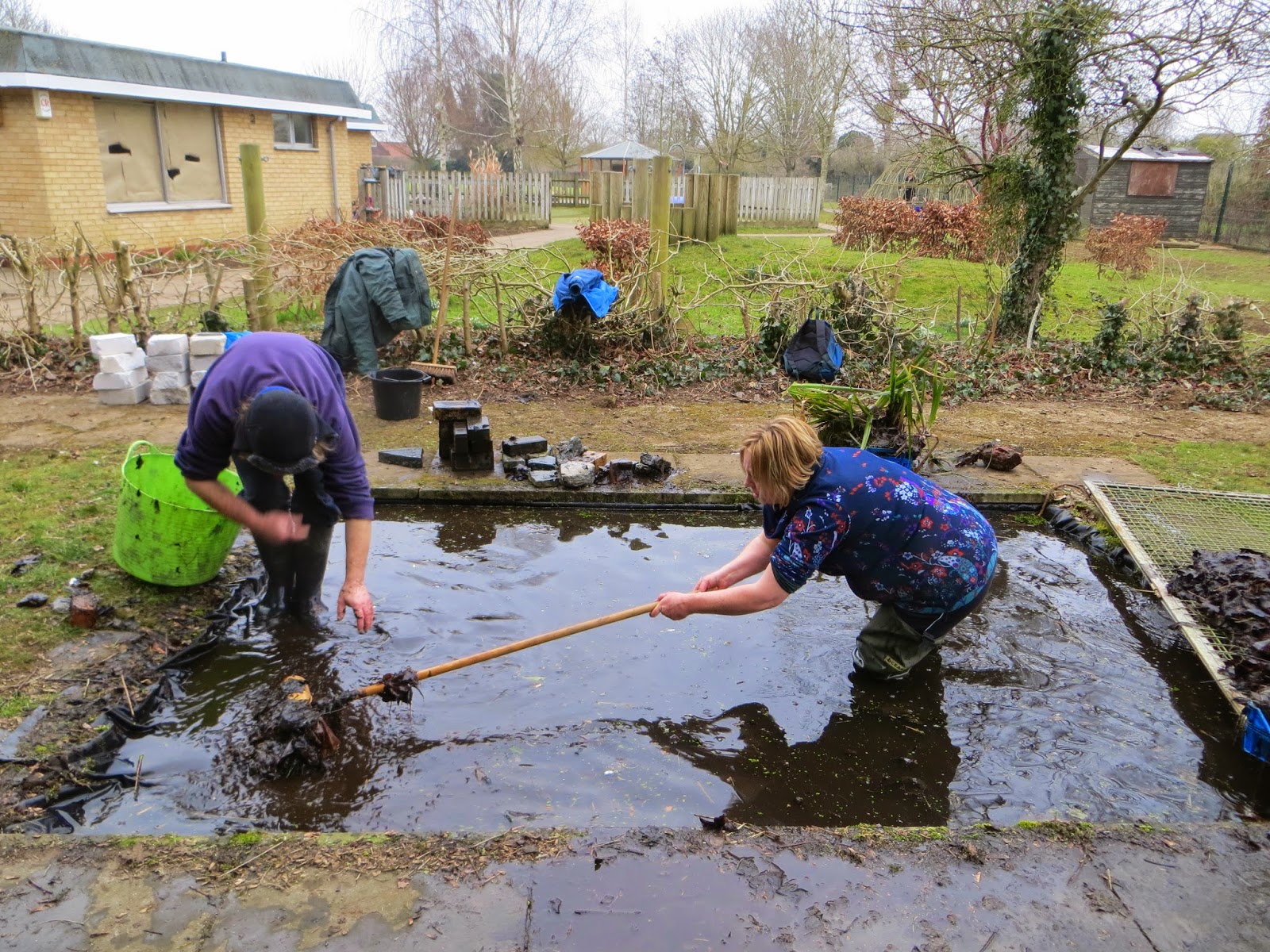The Thursday volunteer group has been hard at it at Standlake Common Nature Reserve this winter and got a lot done thanks to the fairly dry weather. We have only missed one week due to flooding.
 We have carried on coppicing small bays in the shelter belt which has created a huge amount of firewood and brash some of which has been stashed for habitat piles and to act as a mulch round the stumps of the coppiced trees and some has been burnt.
We have carried on coppicing small bays in the shelter belt which has created a huge amount of firewood and brash some of which has been stashed for habitat piles and to act as a mulch round the stumps of the coppiced trees and some has been burnt.
It is great to see the new buds developing this year as at this time in the last two seasons everything has been under flood water. Regrowth was a bit limited over the last couple of years as the cut stools were covered in water for three months. The hazel and willow has regrown fairly well but the hawthorn has been very slow to get going again and some of the stumps have rotted completely. Hopefully, this year will see some vigorous new growth established.
Despite creating a bit of disturbance with our work the birds don't seem to mind us too much and there have been great views this winter with hundreds of wigeon, teal and lapwing on the grassy shoreline and tufted duck and coot in great numbers on the lake. Goldeneye and goosander have been regular visitors this year but no sign of a bittern since the one sighting in the autumn of 2014.















.JPG)



